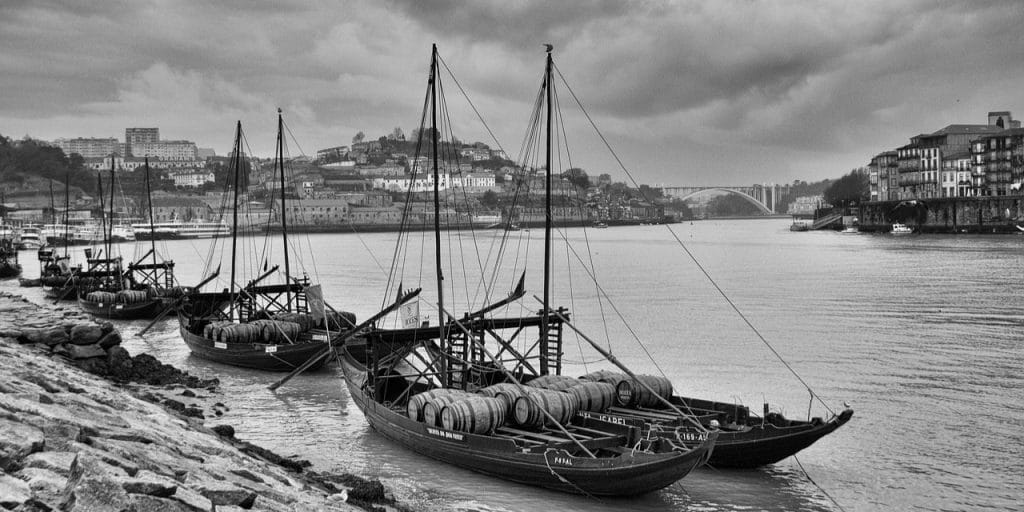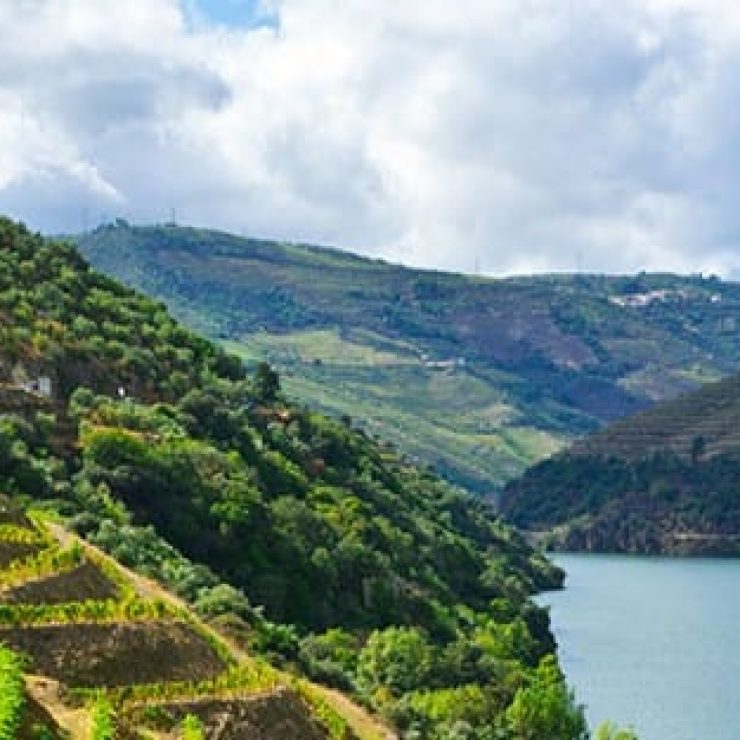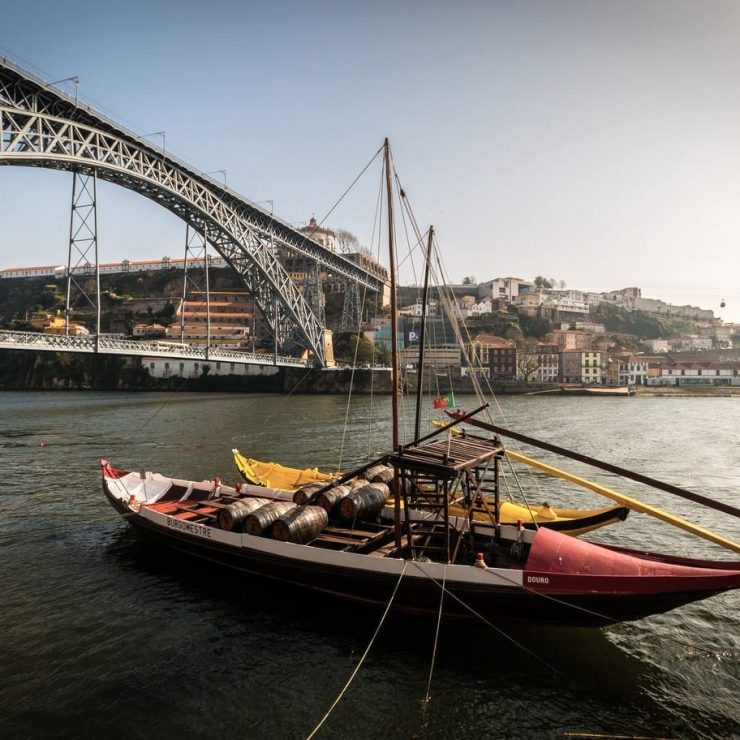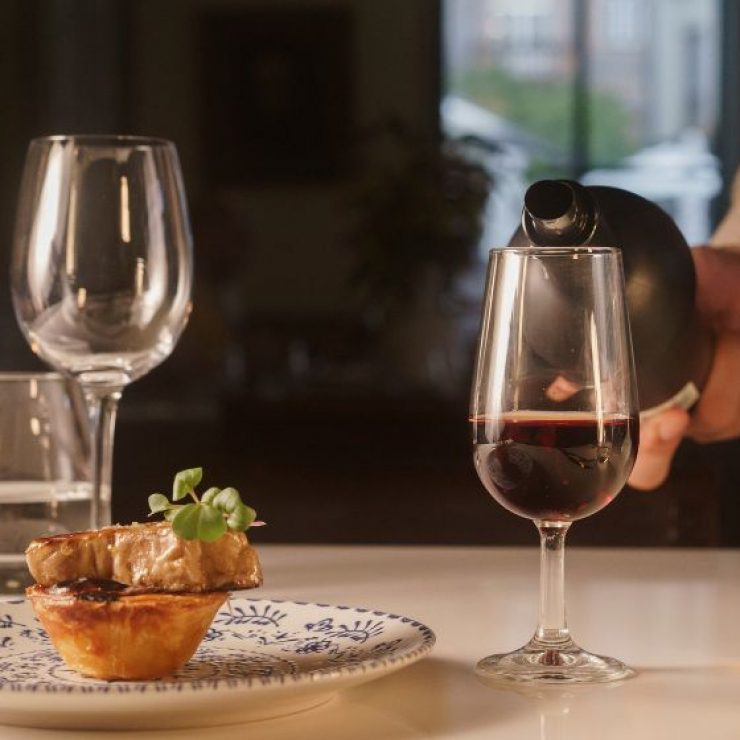If you’ve made it this far, know that we’re going to tell the story of the Rabelo Boat, a true icon of Gaia and Porto. Discover also a hotel in Porto, Gaia that wanted to pay tribute to it.
Did you know that the transport of Port wine barrels to Vila Nova de Gaia was done by the Rabelo Boat? It wasn’t an easy task, because at that time the Douro River was stormy, with turbulent and unpredictable currents. Brave and fearless men steered the Rabelos.

How did the Rabelo Boat come about?
With no roads or railway connections, the estates producing the precious Port Wine were only accessible via the Douro River.
The wooden Rabelo Boats, crewed by fearless men, would break through the turbulent waters of the Douro, carrying barrels of Port Wine to age in the cellars of Vila Nova de Gaia.
The Rabelo Boat is a true masterpiece. Measuring between 19 and 23 meters, it was built with overlapping planks, featuring a flat bottom and a square sail. On average, each boat could carry up to 100 barrels of Port Wine.
The fearless crew usually consisted of 12 men, who made all the difference. They gave their boats religious names as a sign of faith that would safely bring them to shore. Most of the time, they arrived in Porto unscathed, but many lost their lives, like the well-known Baron of Forrester in 1861. Back then, navigating the Douro River was not for the faint-hearted. It was only in the 1970s, with the construction of dams, that the waters of the Douro calmed down.
There are accounts placing the Rabelo Boat on the Douro River as far back as the 13th century, but it was only in 1792 that the General Company for Agriculture of the Alto Douro Vineyards published the regulations related to the vessel, setting its load limits and navigation hours (for example, sailing at night was prohibited).
While the currents helped when going downstream, going upstream relied on the strength of animals and men who, from the riverbank, pulled the boat with the aid of ropes.
The origin of the name Rabelo
The origin of the name “Rabelo” comes from the fact that, instead of a rudder, it had a large steering oar shaped like a tail (“rabo” in portuguese), which is how it got its name.
When did the Barco Rabelo stop being used?
The first railway line along the Douro was completed in 1887. From then on, the legacy of the Rabelo Boat began to decline, as the river was no longer the only option for transporting goods.
However, these boats did not fall out of use for decades. It is believed that the last voyage of a Rabelo carrying barrels of wine along the Douro River took place in 1971.
Today, Port Wine is transported from the Demarcated Douro Region to the cellars in Vila Nova de Gaia by modern tanker trucks.
The traditional Rabelo boats continue to beautify the Douro River, sailing with tourists and locals alike along the waters of the Douro.
Curiosities about the Rabelo Boat
On Saint John’s Day, June 24th, one of the most anticipated events of the year takes place: the famous “Barcos Rabelos Regatta”.
The Port Wine Brotherhood organizes this annual “race” of Rabelo boats to preserve the memory of the ways of life that gave rise to what the Douro and its wine region are today (classified as a World Heritage Site under the category of cultural landscape).
The journey begins at the mouth of the Douro River and ends at the Luiz I Bridge, on the Vila Nova de Gaia side.
An event definitely not to be missed.
Also, don’t miss the chance to take a cruise along the banks of Porto and Vila Nova de Gaia on replicas of these boats. A must-do experience for anyone visiting the cities of Gaia and Porto.
_
If you enjoyed these suggestions, stay tuned to our blog where we will continue to introduce you to Gaia and Porto, along with other beautiful cities in Portugal.




